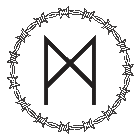Materials
Our products are made from a carefully chosen selection of environmentally conscious materials
- a combination of organic, natural fabrics, recycled fibers and a wide variety of upcycled materials.
Transparency is essential for us, when it comes to choosing the right fabrics for the products. We are working directly with our trusted and certified suppliers to ensure the quality, ethical standards, environmental impact of the materials.
ORGANIC COTTON
Organic cotton is grown without any toxic and persistent pesticides, synthetic fertilizers or insecticides, and GMO-seeds are not allowed. Chemicals used in conventional cotton farming are among the most toxic chemicals classified, and they have a tremendous impact on our air, soil and water, as well as the health of farmers, people living in cotton farming areas, factory workers and the development of allergies.
Organic cotton farming improves the land quality, prevents water contamination and conserves biodiversity and the health of the entire ecosystem.
We are using The Global Organic Textile Standard (GOTS)-certified organic cotton fabrics. GOTS-certification ensures the organic content of textiles and but also the socially responsible and fair manufacturing all along the supply chain, from harvesting of the raw materials, to the ready product.
Read more about the GOTS-certification
Tencel™ is a brand name for a wood-based fiber which is also called lyocell, manufactured by the Lenzing AG.
It's a strong fabric, with beautiful drape and good resistance to wrinkles. Tencel™ lyocell is regenerated from wood cellulose, derived only from sustainable wood sources, natural forests and sustainably managed plantations. Due the transparent supply chain Tencel™ has earned Forest Stewardship Council (FSC) certification.
Unlike other similar regenerated cellulose fiber fabrics, Tencel™ is manufactured in the revolutionary "closed-loop" system. The solvents used in the production process are non-toxic, and are they able to be re-used again and again. Solvents are recycled up to 99,5%.
Tencel fibre is completely biodegradable and vegan-friendly.
Hemp
Strong, durable and lovable - hemp is a champion among the sustainable textiles!
Hemp used for textile fiber production is a strain of the Cannabis sativa plant species. It is one of the fastest growing plants and was one of the first plants to be spun into usable fiber. History of hemp fabrics goes way back - archaeologists found a remnant of hemp cloth in ancient Mesopotamia which dates back to 8,000 BC.
Hemp is humble fellow. It demands very little, and grows wild and happy like a proper weed plant. When compared to cotton, it requires 50% less water and much smaller amount of land to cultivate.
The plant is naturally resistant to pests, so no toxic chemicals or pesticides are required in cultivating hemp. Hemp fiber is one of the strongest and most durable of all textile fibers.
Not only is hemp strong, but it also holds it's shape, stretching less than any other natural fiber. Hemp doesn't wear out, it wears in; the more hemp is used, the softer it gets. Hemp has anti-bacterial properties and it's also naturally resistant to mold and ultraviolet light. It wicks moisture away from the skin quickly, ensuring you feel all nice and neat in your hemp garment.
LINEN
Flax plant, from which linen fabric is made of, is one of the oldest continuously cultivated plants in the world. Flax requires much less water than cotton, both while growing and and in the fabric production process.
Linen is valued for its ability to keep cool in the summer months and trap warmth in colder weather. This is all achieved through the natural properties of the fiber itself. Linen fibers are hollow, moving air and
moisture naturally.
Linen fibers are one of strongest natural fibers, which makes linen fabric durable and long-lasting.
Linen is known it's tendency to wrinkle - but instead of negative side, it should be seen as one of the beautiful characteristics which gives linen it's unique, crispy look! Linen softens beautifully with age.
Cupro is a plant-based, regenerated cellulose fiber, similar to Tencel and modal.
Cupro is made from cotton linter, the tiny silky cotton fibers sticking out from the cotton seed that are too small to be spinned into cotton fabric. To dissolve the linter it's soaked in a mixture of water, copper and ammonium and then spun into fiber.
Cupro fabrics are well-known for their smooth, silky look and luxurious drape. It's considered to be a more environmentally friendly, cruelty-free alternative for silk. And as the raw material is a by-product of the cotton harvest, it gives one more positive point to cupro. As we know that cotton production is very resource intensive, it's great that even the smallest bits if the cotton plant can be used! ♻
Cupro fiber is fully biodegradable and it can be easily recycled.

Re-used & Deadstock fabrics
Textile waste can be divided into two categories, pre- and post-consumer
waste. We're using both types in our products. Instead of using resources for producing new materials, using these materials means saving resources and re-purposing something that originally was doomed to be waste.
POST-CONSUMER WASTE FABRICS
Post-consumer waste is the material and clothing, which the consumer has purchased, most likely worn and then decided to put away.
These can be, e.g. broken, discarded or unwanted clothes and textiles. They are washed, cut apart and then cut again into a new shape and then sewn into new products, which gives these textiles a whole new life. Clothes and accessories made from post-consumer waste materials are often unique, one-of-a-kind pieces.
PRE-CONSUMER WASTE FABRICS
Pre-consumer waste, also known as post-industrial waste, is the material left over from the cltohing & textile industry. We use several kinds of pre-consumer waste materials in our products, for example cutting leftovers and deadstock fabrics.
Deadstock textiles are materials that are no longer useful for other factories and companies.
These fabrics end up unused for several different reasons; color/textile type is no longer in season, overstock, failure in the dyeing or priting process, or textiles has slight damages that weren't worth cutting around in conventional garment manufacturing process, but can be avoided in a smaller scale production.
Using deadstock fabrics gives us a bigger variety of fabrics available. They are mostly used for making limited editions, small series and unique pieces. The deadstock used are handpicked from trusted suppliers, all located in Northern Europe.










